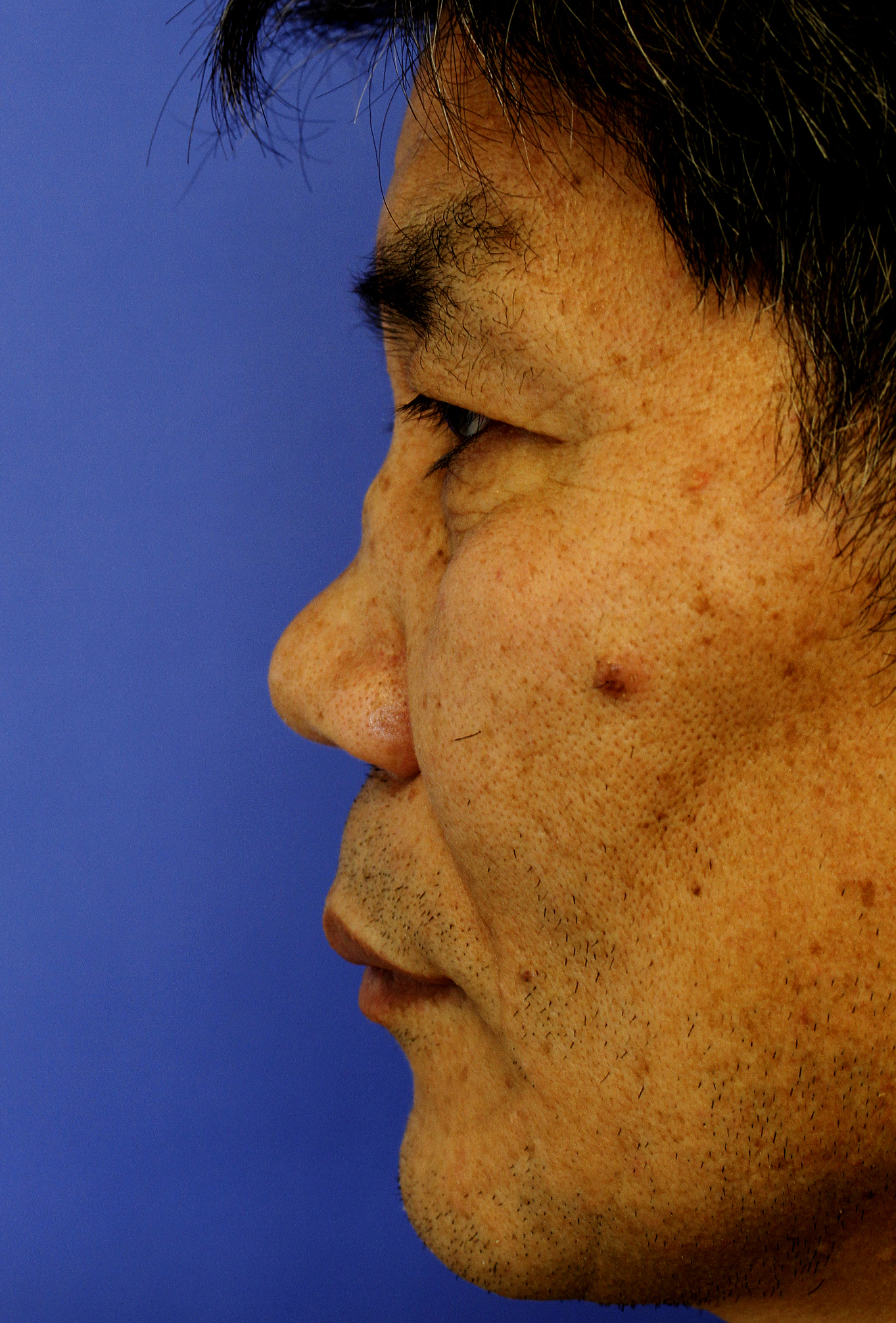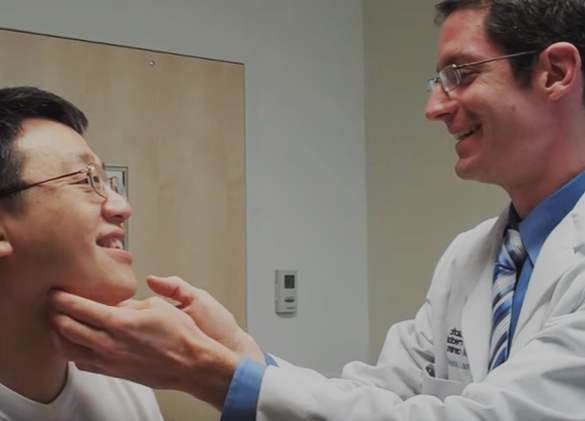What is a saddle nose deformity?
A saddle nose deformity (also  known as a boxers' nose deformity) describes a nose where the bridge has an externally visible concavity (saddle) and loss of height. This typically occurs in the cartilagenous portion of the bridge above the nasal tip (middle third of the nose or middle nasal vault). Due to the loss of cartilage support in the area this deformity can also lead to an overly up-turned tip (foreshortened nose), loss of tip support (deprojection), and retraction of the columella.
known as a boxers' nose deformity) describes a nose where the bridge has an externally visible concavity (saddle) and loss of height. This typically occurs in the cartilagenous portion of the bridge above the nasal tip (middle third of the nose or middle nasal vault). Due to the loss of cartilage support in the area this deformity can also lead to an overly up-turned tip (foreshortened nose), loss of tip support (deprojection), and retraction of the columella.
The photo on the right is a great example of a significant saddle nose deformity. You can see how the middle third of this gentleman's nose has collapsed, creating a saddle-like appearance.
Causes of saddle nose deformity
The underlying cause of a saddle nose deformity is loss of nasal cartilage support. This can include the septum, upper lateral cartilages, and lower lateral cartilages. A multitude of entities can lead to this cartilage loss.
Nasal trauma can cause a saddle nose deformity if a blood clot forms under the septal skin lining (septal hematoma). This disrupts the normal blood supply to the cartilage which if left untreated can cause the cartilage to disintegrate. If the portion of septum injured is located high, toward the bridge the skin in that area can then collapse down given the lack of support.
Similarly, intra-nasal cocaine use can lead to septal perforations and loss of bridge support.
Medical problems that can cause saddle nose deformity
Another classic cause of a saddle nose deformity is Wegener's granulomatosis which is a systemic disease that leads to blood vessel inflammation and micro-abscesses in the upper respiratory tract that can lead to cartilage destruction over time. The patient shown above has Wegener's disease which led to his saddle nose deformity.
Relapsing polychondritis is a disease that produces recurrent episodes of autoimmune cartilage inflammation and destruction within the nose, ears, trachea and joints.
Additional causes of saddle nose deformities are syphilis and leprosy (Hansen's disease). Leprosy is very uncommon in the United States but is endemic in certain parts of the world.


